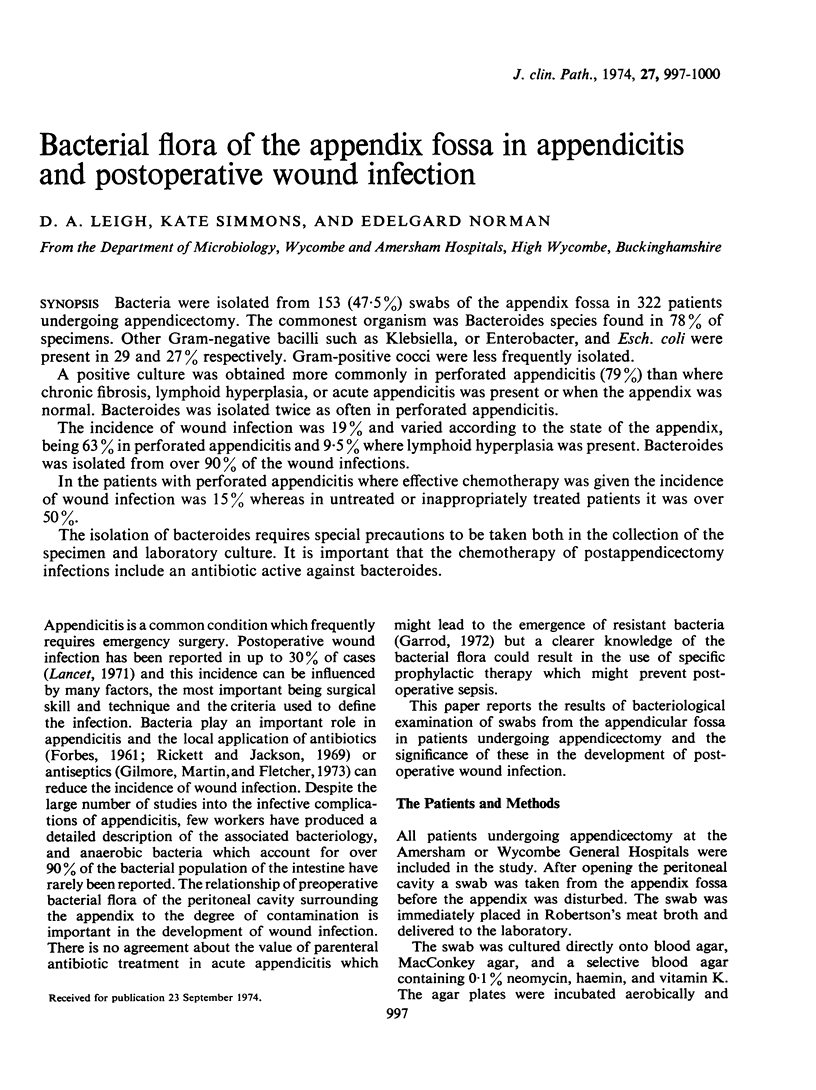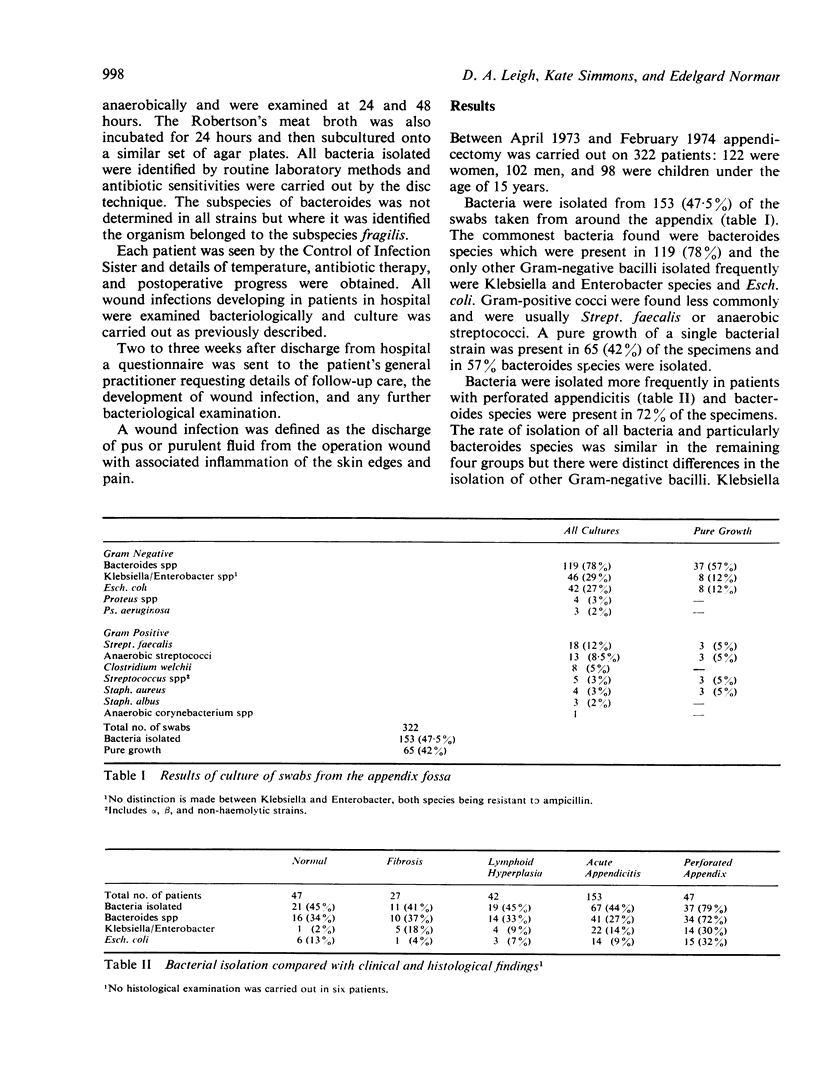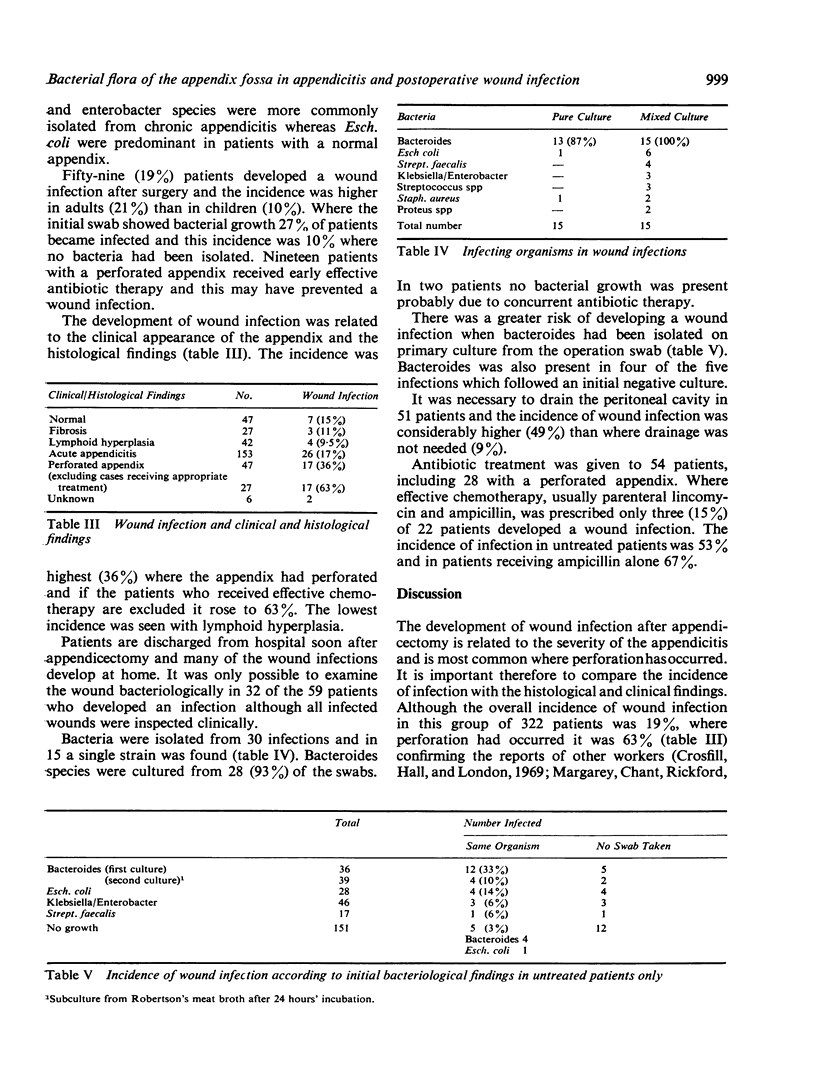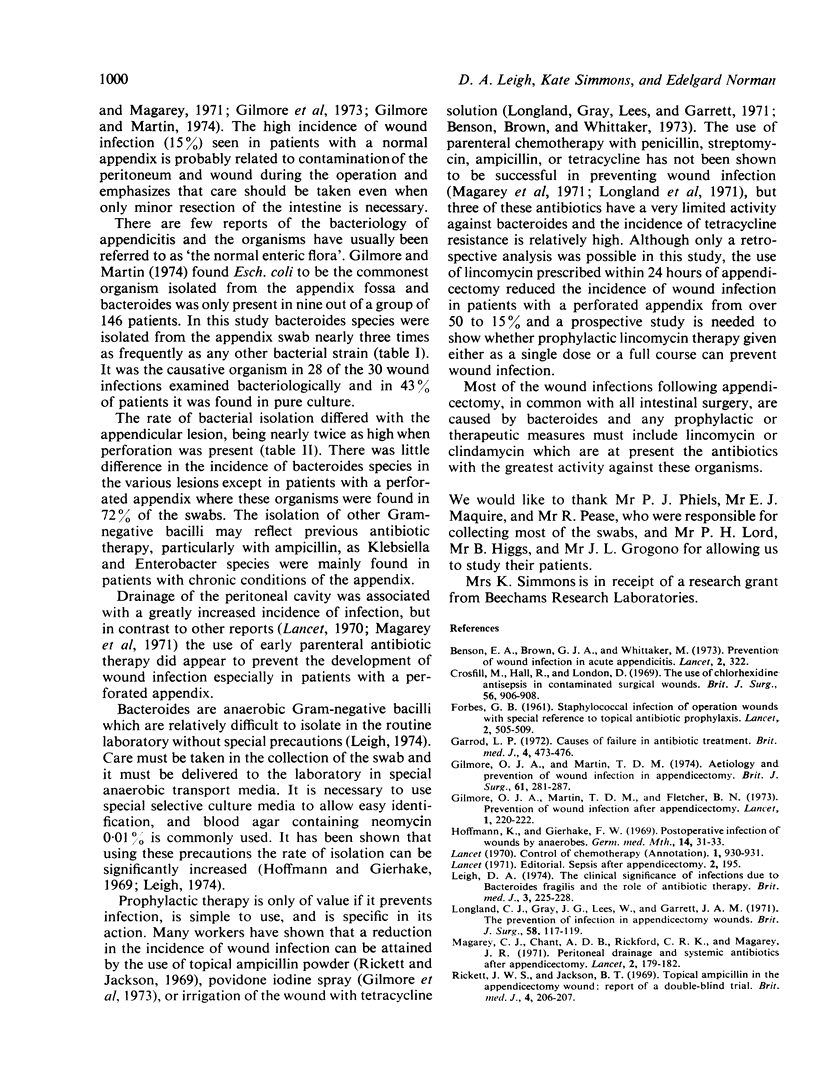Abstract
Bacteria were isolated from 153 (47·5%) swabs of the appendix fossa in 322 patients undergoing appendicectomy. The commonest organism was Bacteroides species found in 78% of specimens. Other Gram-negative bacilli such as Klebsiella, or Enterobacter, and Esch. coli were present in 29 and 27% respectively. Gram-positive cocci were less frequently isolated.
A positive culture was obtained more commonly in perforated appendicitis (79%) than where chronic fibrosis, lymphoid hyperplasia, or acute appendicitis was present or when the appendix was normal. Bacteroides was isolated twice as often in perforated appendicitis.
The incidence of wound infection was 19% and varied according to the state of the appendix, being 63% in perforated appendicitis and 9·5% where lymphoid hyperplasia was present. Bacteroides was isolated from over 90% of the wound infections.
In the patients with perforated appendicitis where effective chemotherapy was given the incidence of wound infection was 15% whereas in untreated or inappropriately treated patients it was over 50%.
The isolation of bacteroides requires special precautions to be taken both in the collection of the specimen and laboratory culture. It is important that the chemotherapy of postappendicectomy infections include an antibiotic active against bacteroides.
Full text
PDF



Selected References
These references are in PubMed. This may not be the complete list of references from this article.
- Benson E. A., Brown G. J., Whittaker M. Prevention of wound infection in acute appendicitis. Lancet. 1973 Aug 11;2(7824):322–322. doi: 10.1016/s0140-6736(73)90822-2. [DOI] [PubMed] [Google Scholar]
- Crosfill M., Hall R., London D. The use of chlorhexidine antisepsis in contaminated surgical wounds. Br J Surg. 1969 Dec;56(12):906–908. doi: 10.1002/bjs.1800561209. [DOI] [PubMed] [Google Scholar]
- FORBES G. B. Staphylococal infection of operation wounds with special reference to topical antibiotic prophylaxis. Lancet. 1961 Sep 2;2(7201):505–509. doi: 10.1016/s0140-6736(61)92952-x. [DOI] [PubMed] [Google Scholar]
- Garrod L. P. Causes of failure in antibiotic treatment. Br Med J. 1972 Nov 25;4(5838):473–476. doi: 10.1136/bmj.4.5838.473. [DOI] [PMC free article] [PubMed] [Google Scholar]
- Gilmore O. J., Martin T. D. Aetiology and prevention of wound infection in appendicetomy. Br J Surg. 1974 Apr;61(4):281–287. doi: 10.1002/bjs.1800610407. [DOI] [PubMed] [Google Scholar]
- Gilmore O. J., Martin T. D., Fletcher B. N. Prevention of wound infection after appendicectomy. Lancet. 1973 Feb 3;1(7797):220–222. doi: 10.1016/s0140-6736(73)90063-9. [DOI] [PubMed] [Google Scholar]
- Hoffmann K., Gierhake F. W. Postoperative infection of wounds by anaerobes. Ger Med Mon. 1969 Jan;14(1):31–33. [PubMed] [Google Scholar]
- Leigh D. A. Clinical importance of infections due to Bacteroides fragilis and role of antibiotic therapy. Br Med J. 1974 Jul 27;3(5925):225–228. doi: 10.1136/bmj.3.5925.225. [DOI] [PMC free article] [PubMed] [Google Scholar]
- Longland C. J., Gray J. G., Lees W., Garrett J. A. The prevention of infection in appendicectomy wounds. Br J Surg. 1971 Feb;58(2):117–119. doi: 10.1002/bjs.1800580209. [DOI] [PubMed] [Google Scholar]
- Magarey C. J., Chant A. D., Rickford C. R., Margarey J. R. Peritoneal drainage and systemic antibiotics after appendicectomy. A prospective trial. Lancet. 1971 Jul 24;2(7717):179–182. doi: 10.1016/s0140-6736(71)90894-4. [DOI] [PubMed] [Google Scholar]
- Rickett J. W., Jackson B. T. Topical ampicillin in the appendicectomy wound: report of double-blind trial. Br Med J. 1969 Oct 25;4(5677):206–207. doi: 10.1136/bmj.4.5677.206. [DOI] [PMC free article] [PubMed] [Google Scholar]


